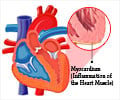Communities in the United States that experienced the most economic distress in the wake of the Great Recession saw a significant increase in death rates from heart disease and strokes among middle-aged people, stated study.

‘Counties that experienced the most economic distress in the aftermath of the Great Recession had the highest cardiovascular mortality rates.’





Authors say the findings, which will be presented on Monday, Nov. 18, at the American Heart Association's 2019 Scientific Sessions in Philadelphia, underscore how economic disparities contribute directly to health disparities. "Our study shows that large economic trends--whether it's a significant reduction in employment or a recession--have a real impact on communities and on the cardiovascular health of people living in those communities," said the study's lead author Sameed Khatana, MD, a Cardiovascular Medicine fellow at Penn Medicine. "It's important that policymakers, physicians and even patients are aware of this increase in mortality rates. Interventions, such as policies like a health insurance expansion, may help slow this trend or even reverse it."
After more than 50 years of steep declines, cardiovascular death rates in the United States have been nearly stagnant since 2011--with rates even rising in some groups of middle-aged adults, according to data from the Centers for Disease Control and Prevention (CDC). Although it's known that the United States has experienced an uneven recovery following the Great Recession, it hasn't been clear whether economic factors contribute to the varying--and, in some cases, heightened--heart disease death rates in communities nationwide.
The team, which includes researchers from Beth Israel Deaconess Medical Center and Harvard T.H. Chan School of Public Health, examined county-level cardiovascular mortality rates, spanning 2010 to 20105, for adults aged 25 to 64. They also pulled county-level values for the Distressed Communities Index, which combines seven markers of economic activity, such as income, access to housing, and educational attainment. In order to identify links between cardiovascular mortality and economic distress, the team then developed a linear regression model that included a variety of factors, such as county-level health insurance coverage, the prevalence of obesity and diabetes and density of primary care providers.
They found counties with the highest Distressed Communities Index rating at baseline also had the highest baseline cardiovascular mortality and saw largest increases in deaths from 2010 to 2015. Additionally, the counties that had worsening economic distress experienced a significantly greater increase in heart disease deaths compared to counties with the lowest ratings, independent of baseline economic distress.
Advertisement
Source-Eurekalert















